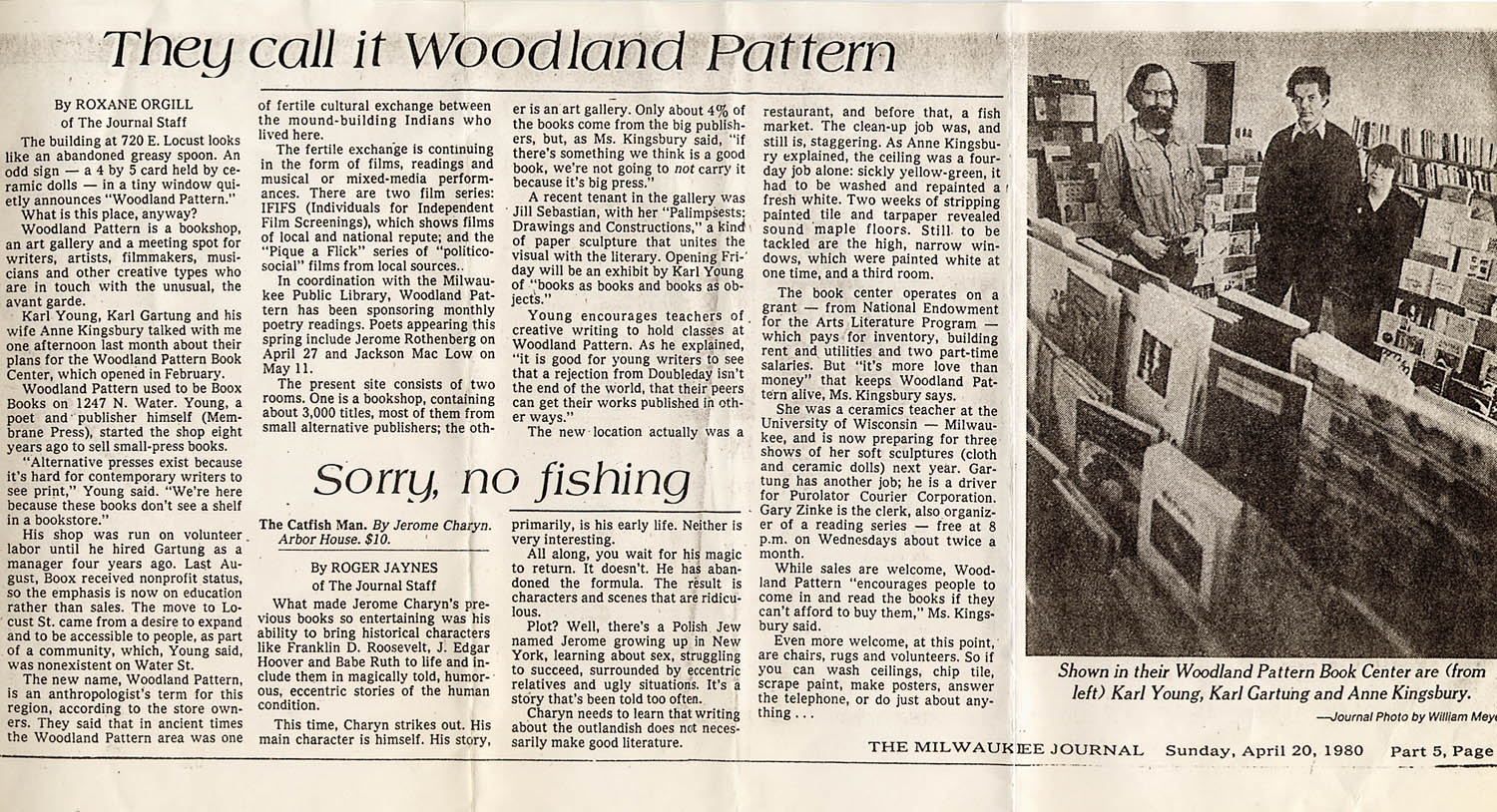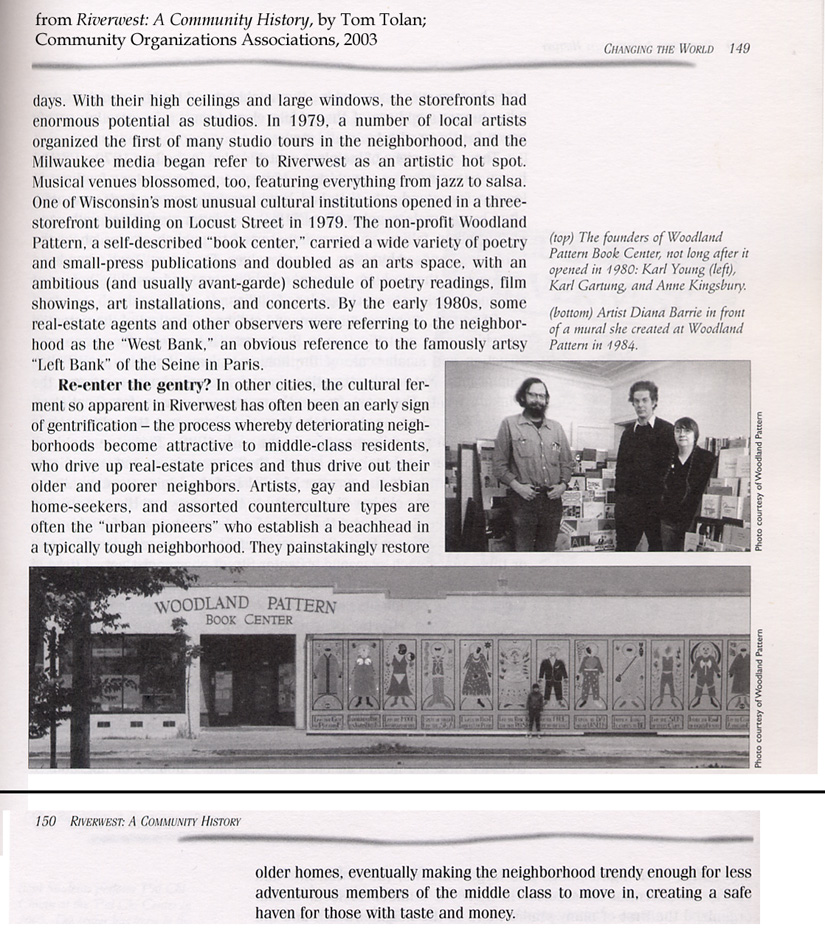Real [In Every Sense] Real Values
by Karl Young
|
||
|
|


Real [In Every Sense] Real Values
by Karl Young
At a time of economic collapse triggered by speculation in real estate, incredibly, and mindlessly, all sorts of people see the arts as frivolous luxuries that can most easily be dispensed with until serious economic issues in the "real world" have been remedied. Aside from the nightmarish nature of a society without art, it's incredible to imagine commercial success without a flourishing artistic base. The success of most consumer products depends as much on their design as their function. The notion of the expendability of the arts ignores the most basic practicalities of real estate development in America, and may be an outstanding example of the folly of rejecting history. People moved to suburbs in droves because they wanted a more pleasant environment as well as wanting to own their own homes. The cities they left behind became slums for the poorest members of society. Parts of cities revived because artists needed cheap places to live and to work together.
The classic example of this is the steady gentrification of Lower Manhattan, starting with Greenwich Village, and moving through the East Village, and Washington Park, after the artists had done such a good job of increasing real values that they could no longer afford to live there. SoHo was initially set up as a community for artists with the hopes of withstanding gentrification, but once more, the artists who colonized it made it too valuable for them to keep. At present, even the Bowery has been too well rebuilt by them to keep for themselves. In Anglo-America's empire city, simple hard-nosed, non-nonsense economics demonstrate that nobody knows how to rebuild a wasted city with the fewest resources or capitol as do artists. They and other low-income residents suffer the most from their success, but even this does not stop them from increasing real values. Additional urgencies related to fuel prices, dependence on foreign energy resources, add an extra dimension to the importance of the abilities of artists to rebuild crumbling cities. Yet conventional wisdom dictates that arts spending is frivolous and impractical. In this context, there seems little more impractical than the ideology and prejudice of those who see the arts as frills.
In my first installment of this retrospective, I wrote extensively about how Patricia Wagner and I founded Milwaukee's Water Street Arts Center in 1972. As I relate in the essay, we didn't have a cent to put into it, nor did we have a grant or a patron or any other source of funding. I had been trying to figure out ways to set up an arts center for a nuumber of years. Theater X, an experimental troupe, rented a building slated for destruction by the city to make room for freeway construction. The building was large, in poor condition, and the actors were not around a good deal of the time. Our initial arrangement with Theater X was that we would take care of the building for them while they were gone in exchange for use of some of the space the building provided. Within a few months, we set up a book store, art gallery, and programs for poetry readings, book production, the screening of films, discussion and DIY groups of all sorts. (I resigned my last official position, as Vice President, of WP in 1990. I continued to set up and take part in WP projects for another 15 year. Fittingly, the last major, public effort was co-publishing the facsimile edition of Lorine Niedecker's Paean to Place with WP for her Centennial, in 2003. A number of smaller and/or odder projects followed. But I like to see this as the completion of a circuit. Niedker spent most of her life a relatively short drive to the southwest of Milwaukee, and I am now one of probably no more than half a dozen living poets to have met her. The organization now, as previously, owes its success to the work of a small army of people — and even the unfairly belittled city of Milwaukee.)
Rather than write more on the subject of the practical value of art in the current time of economic crisis, I'll just reproduce two specimens of what grew out of the organization Pat and I created without a cent in a rickety building condemned for freeway construction. Woodland Pattern is still operating 38 years later. As a separate entity, Woodland Pattern is celebrating it's 30th aniverasy this year. Most businesses founded for no reason other than profit don't last that long. According to local reealtors I have spoken to in the last three years, River West and the East Side districts of Milwaukee have stood up better to declines in real values than most other parts of the city. They're all familiar with Woodland Pattern, are proud of it, and acknowledge its contribution to real values in the area. In this instance, I'm talking about Milwaukee, a gentler place than Manhattan, and "gentrification" or whatever you want to call it in these districts has not done as much to force out low income residents. Here is a newspaper article and a passage from a local history. They should state the case succinctly and impartially enough. I would like to add that Tolan's community history is a model of its kind. It doesn't show any particular bias or concern for the arts. If anything, it downplays them. Please note the dates of both articles.


Click here to return to Some Volumes of Poetry, Part 4